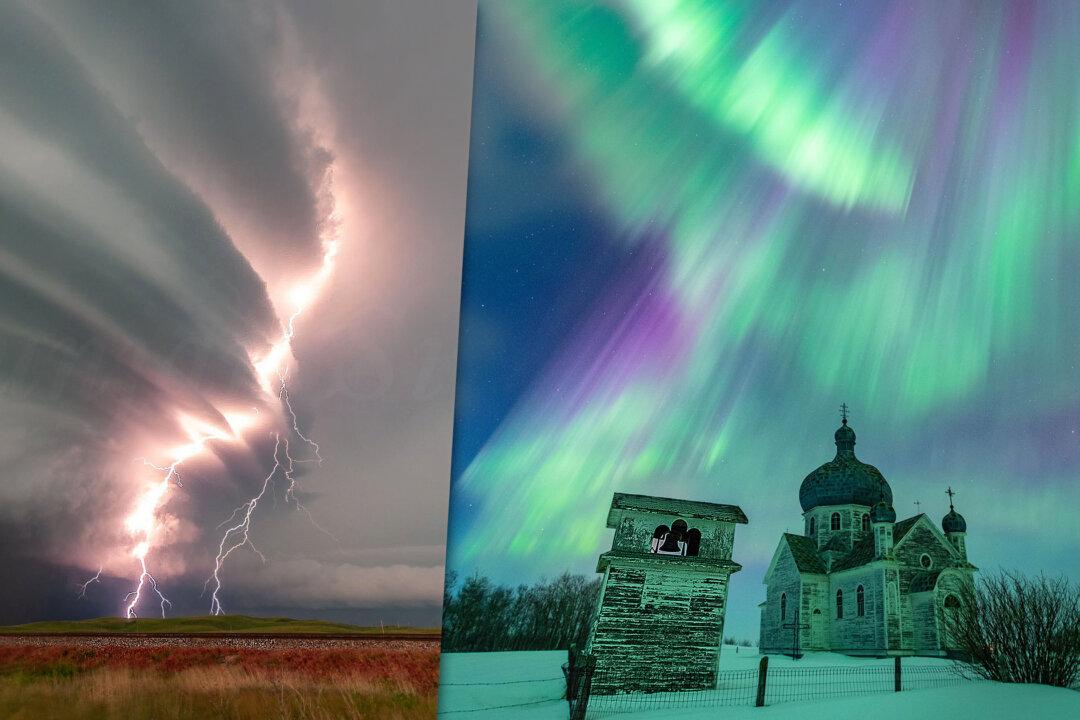The storm chaser checked his phone for the umpteenth time. He saw real-time solar wind parameters all lined up for a northern lights display of epic proportions. Indeed, weather photographer Gunjan Sinha, 44, anticipated he was going to have a fun night.
Sinha is blessed with his flat prairie province, Saskatchewan, ranking among the top aurora borealis-sighting spots anywhere, and on this particular night, March 23, he was geared up and ready to intercept a solar storm that held significant promise. “The National Oceanic and Atmospheric Administration issued a G2-class geomagnetic storm watch with the anticipation of the approaching solar wind stream,” he told The Epoch Times. “I knew this could be a strong auroral event given the perfect timing, only a couple of days after the spring equinox and new moon.” The moonless sky was ideal for discerning rare aurora colors such as reds, purples, and even blues.






